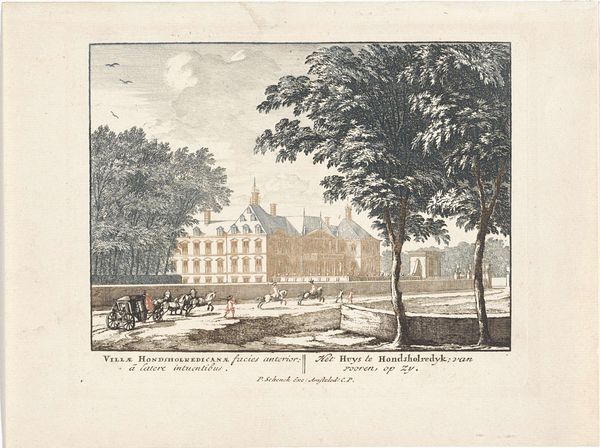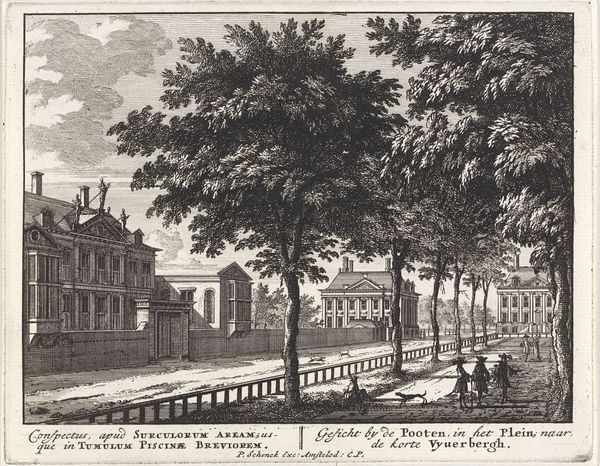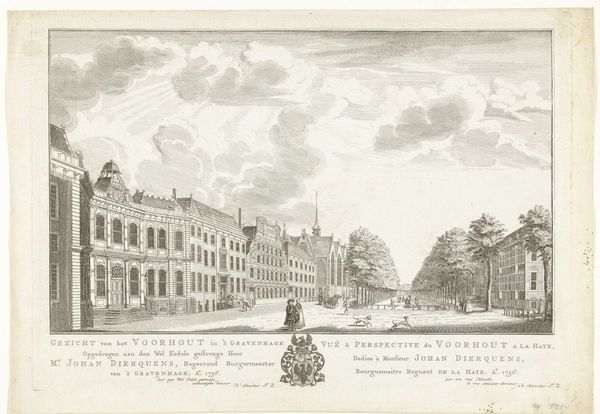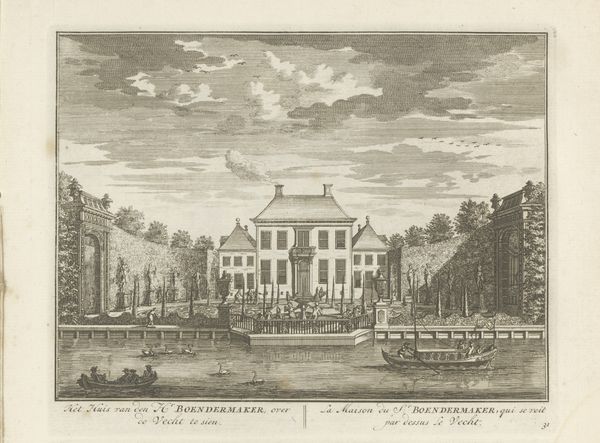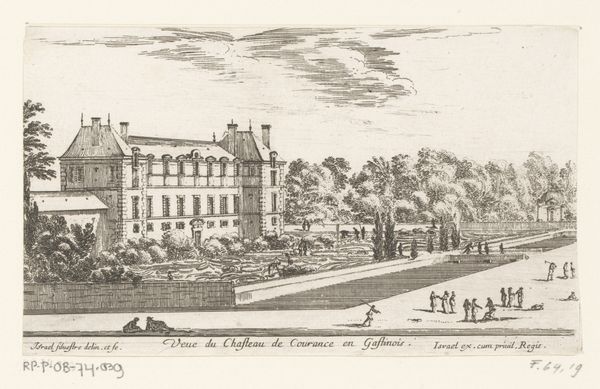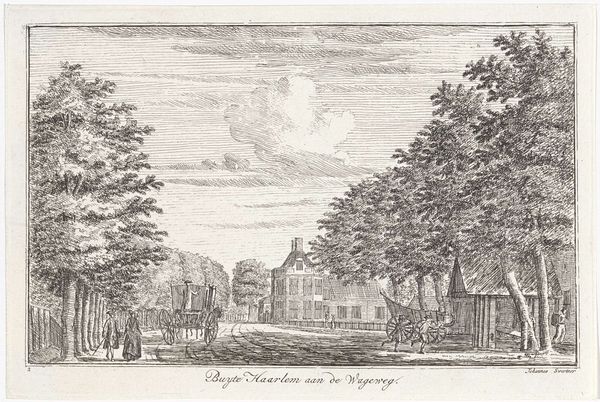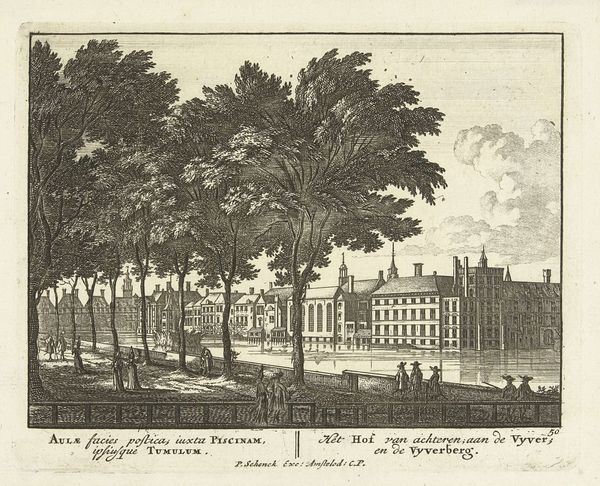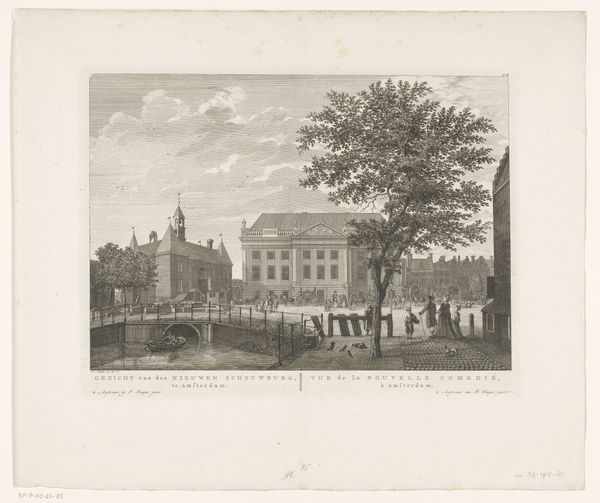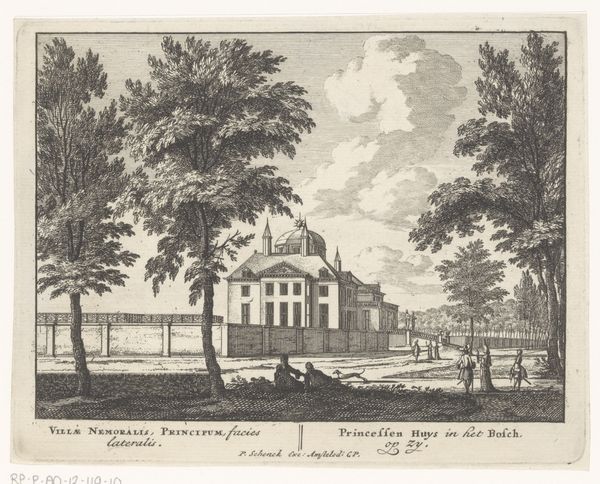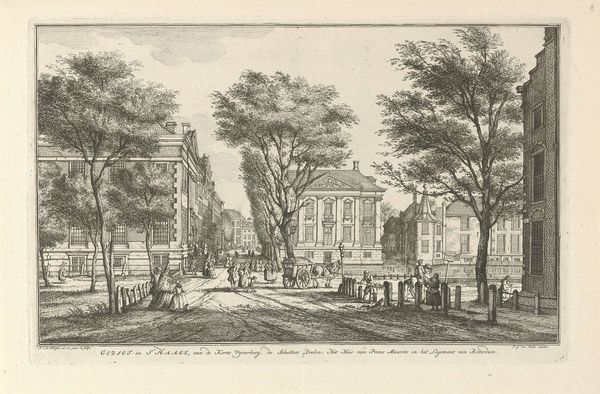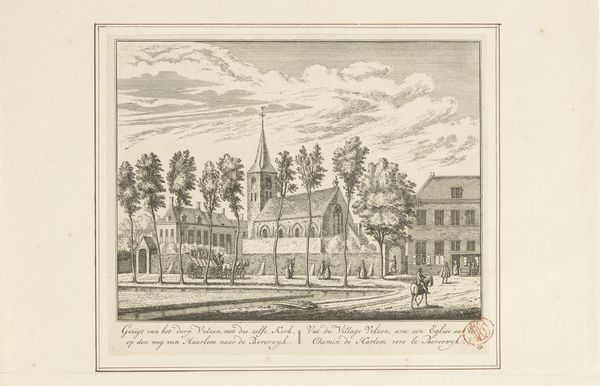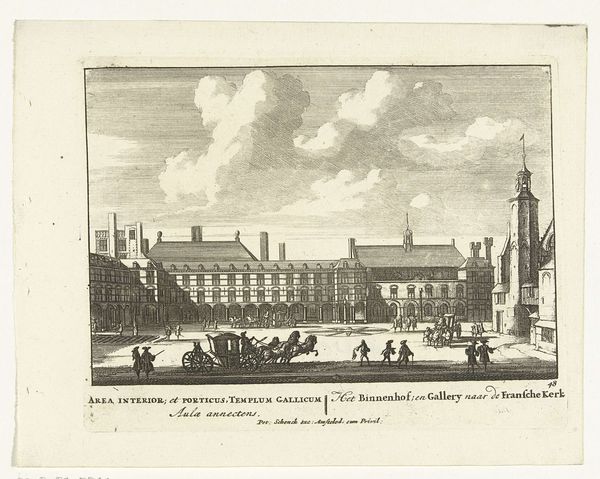
print, etching, paper, engraving
#
dutch-golden-age
# print
#
etching
#
old engraving style
#
landscape
#
paper
#
pen-ink sketch
#
cityscape
#
engraving
Dimensions: height 132 mm, width 169 mm
Copyright: Rijks Museum: Open Domain
Editor: Here we have "Gezicht op Huis Honselaarsdijk," a print made between 1695 and 1705 by Jan van Call, employing etching and engraving on paper. The textures are so delicate; the image feels meticulously constructed. What do you see in this piece from a formalist perspective? Curator: The work distinguishes itself through its highly structured composition and detailed linework. Note how the artist meticulously renders the architectural details of the Huis Honselaarsdijk, playing with perspective to create a sense of depth and scale. Consider the geometric patterns within the building itself, contrasted against the more organic shapes of the trees. Editor: Yes, the balance between the man-made structure and the natural elements is striking. But the light feels flat— is that a limitation of the medium? Curator: The even distribution of light across the scene is deliberate. The formal arrangement takes precedence. Van Call uses line and form to establish a balanced interplay of positive and negative space. Where do your eyes go when you observe it? Editor: I keep going back to the trees. Their placement frames the central view of the house, drawing your attention to it. Curator: Precisely. The strategic placement of the trees is essential. Semiotically, they could represent the boundaries between civilization and nature. This element controls the composition to emphasize the estate’s grandeur, acting as framing devices that guide our eyes and focus. The estate becomes framed by nature, emphasizing controlled, ordered lines, typical of 17th century architectural and artistic principles. Editor: So, beyond just a picture, the artwork has elements driving the whole. Thank you. It gives one much to think about. Curator: Indeed, analyzing visual components allows us a new appreciation for composition. It's these precise decisions that structure how the work is interpreted.
Comments
No comments
Be the first to comment and join the conversation on the ultimate creative platform.
